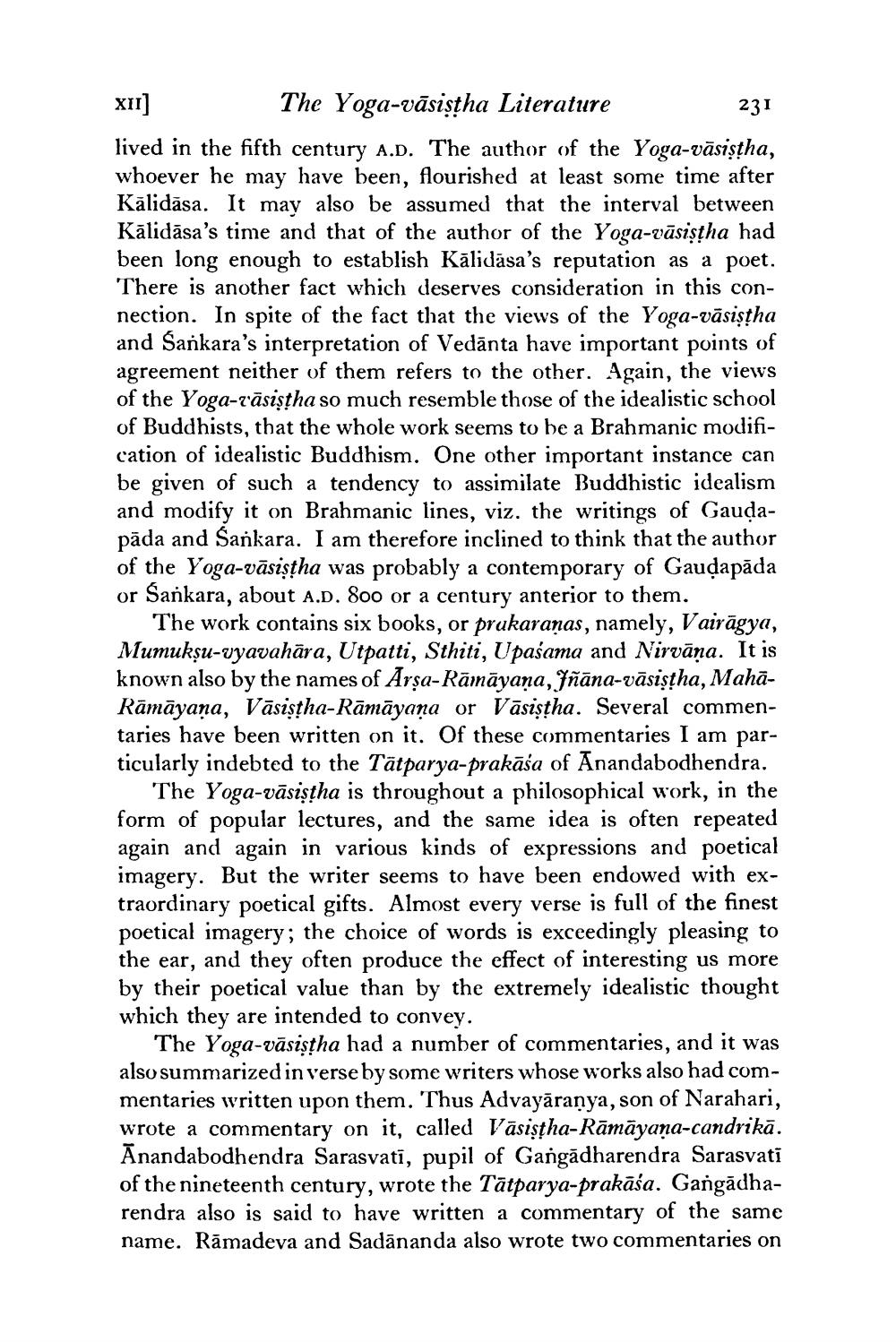________________
XII
The Yoga-vāsistha Literature
231 lived in the fifth century A.D. The author of the Yoga-vāsiştha, whoever he may have been, flourished at least some time after Kālidāsa. It may also be assumed that the interval between Kālidāsa's time and that of the author of the Yoga-vāsiştha had been long enough to establish Kālidāsa's reputation as a poet. There is another fact which deserves consideration in this connection. In spite of the fact that the views of the Yoga-vāsiştha and Sankara's interpretation of Vedānta have important points of agreement neither of them refers to the other. Again, the views of the Yoga-cāsiştha so much resemble those of the idealistic school of Buddhists, that the whole work seems to be a Brahmanic modification of idealistic Buddhism. One other important instance can be given of such a tendency to assimilate Buddhistic idealism and modify it on Brahmanic lines, viz. the writings of Gaudapāda and Sankara. I am therefore inclined to think that the author of the Yoga-vāsiştha was probably a contemporary of Gaudapāda or Sankara, about A.D. 800 or a century anterior to them.
The work contains six books, or prakaranas, namely, Vairāgya, Mumukṣu-vyavahāra, Utpatti, Sthiti, Upašama and Nirvāņa. It is known also by the names of Arşa-Rāmāyaṇa, jñāna-vāsiştha, MahāRāmāyaṇa, Vāsistha-Rāmāyaṇa or Vāsiştha. Several commentaries have been written on it. Of these commentaries I am particularly indebted to the Tātparya-prakāśa of Anandabodhendra.
The Yoga-vāsiştha is throughout a philosophical work, in the form of popular lectures, and the same idea is often repeated again and again in various kinds of expressions and poetical imagery. But the writer seems to have been endowed with extraordinary poetical gifts. Almost every verse is full of the finest poetical imagery; the choice of words is exceedingly pleasing to the ear, and they often produce the effect of interesting us more by their poetical value than by the extremely idealistic thought which they are intended to convey.
The Yoga-vāsiştha had a number of commentaries, and it was also summarized in verse by some writers whose works also had commentaries written upon them. Thus Advayāranya, son of Narahari, wrote a commentary on it, called Vāsıştha-Rāmāyana-candrikā. Anandabodhendra Sarasvati, pupil of Gangădharendra Sarasvati of the nineteenth century, wrote the Tātparya-prakāśa. Gangādharendra also is said to have written a commentary of the same name. Rāmadeva and Sadānanda also wrote two commentaries on




